Utility transformers (or power transformers, TRAFO) transform an incoming alternating current (AC) power system into an outgoing AC power system, often converting from higher voltage to lower voltage or vice versa.
As TRAFOs essentially pass the upstream electricity (input) on to the downstream users (output), only the losses (input minus output) are accounted as electricity consumption.
TRAFOs are used in the transmission and distribution of electricity, between the point of generation and the point of use. The associated losses are already considered in the EIA as part of the efficiency assumed for electricity generation and distribution (PEF). This PEF is used when determining the primary energy (fuel) necessary to supply a given amount of electricity to the end-user.
Source: estimations from the Ecodesign Impact Accounting Overview Report 2024
Scope
The following table shows some examples of products in scope and out of scope in the Ecodesign Regulation:
| In Scope | Out of Scope |
|---|---|
|
|
Check the complete list in the Ecodesign Regulation.
Ecodesign Requirements
Rules on Ecodesign mainly cover minimum energy efficiency levels of transformers with a minimum power rating of 1 kVA that are used in 50 Hz electricity networks or in industrial applications.
The original Regulation on Ecodesign requirements for power transformers (EU) 548/2014 has pushed the transformers market in the EU to manufacture more efficient models and reduce lifecycle costs.
From November 2019, the original regulation is amended by Regulation (EU) 2019/1783. This regulation introduces targeted concessions from the minimum efficiency requirements applicable in Tier 2 from July 2021 and clarifies several provisions in the original regulation.
Highlights
Using more energy efficient transformers should lead to energy savings of an estimated 16 TWh per year after 2020. This is equivalent to 3.7 million tons less of CO2 being emitted each year, or half of Denmark’s total annual electricity consumption (32 TWh).
Facts & Figures
This graphic shows the estimated sales, stock, energy consumption (primary, electric or fuel), greenhouse gas emissions, consumer expenses and business revenues for years 2010 and 2030. The estimated values inside the graph bars are those from the EIA ECO-scenario, they include the effects of Ecodesign and Energy Labelling measures.
The difference with the business as usual (BAU) scenario without these estimated measures is shown next to the graph bar. These figures indicate the estimated savings obtained due to the measures.
Product: Utility Transformers Measures: Regulation (EU) 548/2014, amendment Regulation (EU) 2019/1783 |
|---|
| The striped lines in the charts show the 'Effect of the Regulations' |
SALES (x1000 units) 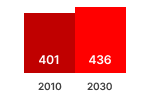 | STOCK (x1000 units) 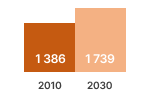 | Electricity (TWh/a) 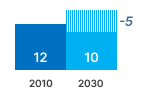 |
GHG-EMISSION 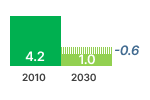 | CONSUMER EXPENSES 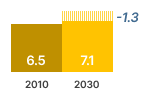 | REVENUES 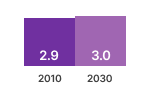 |
Source: estimations from the Ecodesign Impact Accounting Overview Report 2023
In 2020, 4.4 million utility transformers were in use in the EU27, of which 63% for distribution of electricity to households, 32% for distribution to industries, 3% to attach distributed energy resources (wind, solar, hydro) to the network, and 2% in high-voltage transmission networks.
The electricity losses in these transformers were 105 TWh in 2020. That is 4% of the total final electricity consumption in the EU27 in that year (2384 TWh), and equivalent to the annual energy consumption of 578 theme parks like Disneyland Paris (182 GWh).
In 1990, sold utility transformers had an average annual electricity loss of 22 MWh. Without regulations these losses would have been 28 MWh in 2020, but due to the Ecodesign regulations they were reduced to 23 MWh (-17%).
The regulations saved 5.7 TWh of electricity in 2020 (-5% compared to no measures), projected to increase to 17 TWh in 2030 (-12%).
The 2020 savings are 0.24% of the total EU27 electricity consumption in that year, and close to the annual consumption of Luxembourg (6.1 TWh).
Due to Ecodesign measures, EU27 users are forecasted to save € 0.7 billion on utility transformers in 2030 (-3%).
Expected Savings
The total EU27 stock of TRAFOs in scope of Regulation 548/2014 was 4.4 mln units in 2020 and had 105 TWh/a of electricity losses. The largest part (63%) are distribution TRAFOs (0.4 MVA) but they account for only 19% of overall TRAFO losses. Industry TRAFOs (oil and dry, 1-1.25 MVA) are 17% of the stock and responsible for another 19% of the losses. Small TRAFOs (0.016 MVA) are 15% of the stock, but associated to only 2% of the losses. Power TRAFOs (100 MVA) are only 2% of the stock but cause 55% of the losses.
To avoid that losses are counted twice, the EIA sets the electricity consumption of TRAFOs to zero for the BAU scenario and then considers the savings (smaller losses) due to Ecodesign measures as negative electricity consumption in the ECO scenario.
Small TRAFOs and Power TRAFOs have no associated electricity savings. The savings due to Ecodesign measures on the other TRAFO-types are 17 TWh/a in 2030, reducing their electricity losses from 144 TWh/a (without measures) to 127 TWh/a.
Total EU27 Annual Electricity Consumption of Utility Transformers for Scenarios with and without Measures
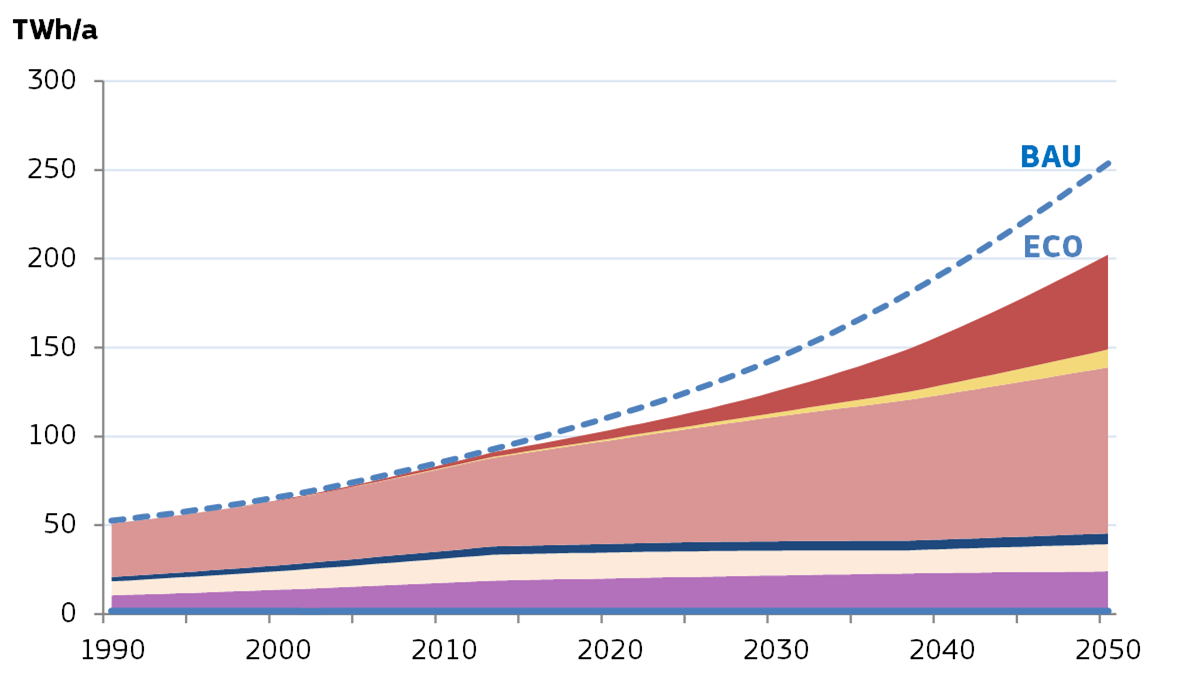
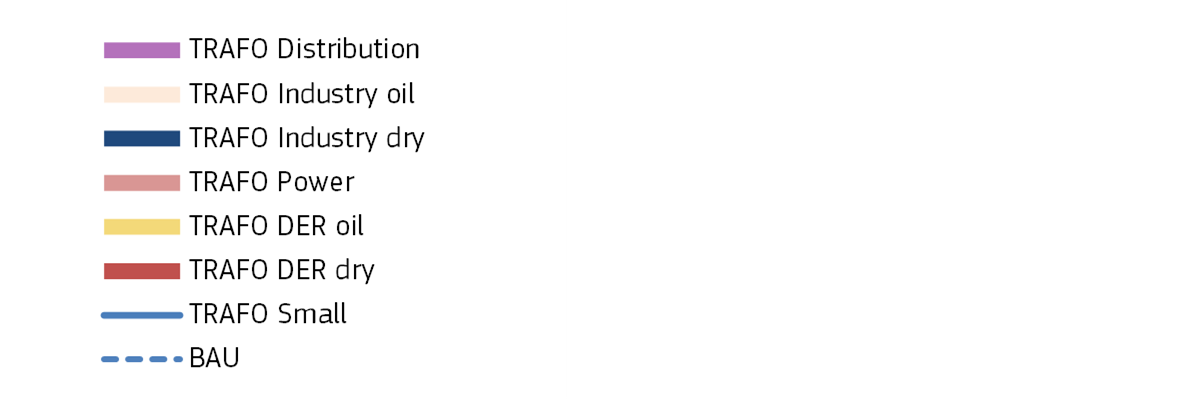
Source: estimations from the Ecodesign Impact Accounting Overview Report 2024

Policy
Ongoing legislative work
The Regulation is currently under review. Please check the ongoing initiatives on the Have your say portal.
Commission Regulation (EU) 548/2014 of 21 May 2014 on implementing Directive 2009/125/EC of the European Parliament and of the Council with regard to small, medium and large power transformers
Disclaimer: please pay attention to possible updates/changes as indicated in the Official Journal (green dot)

